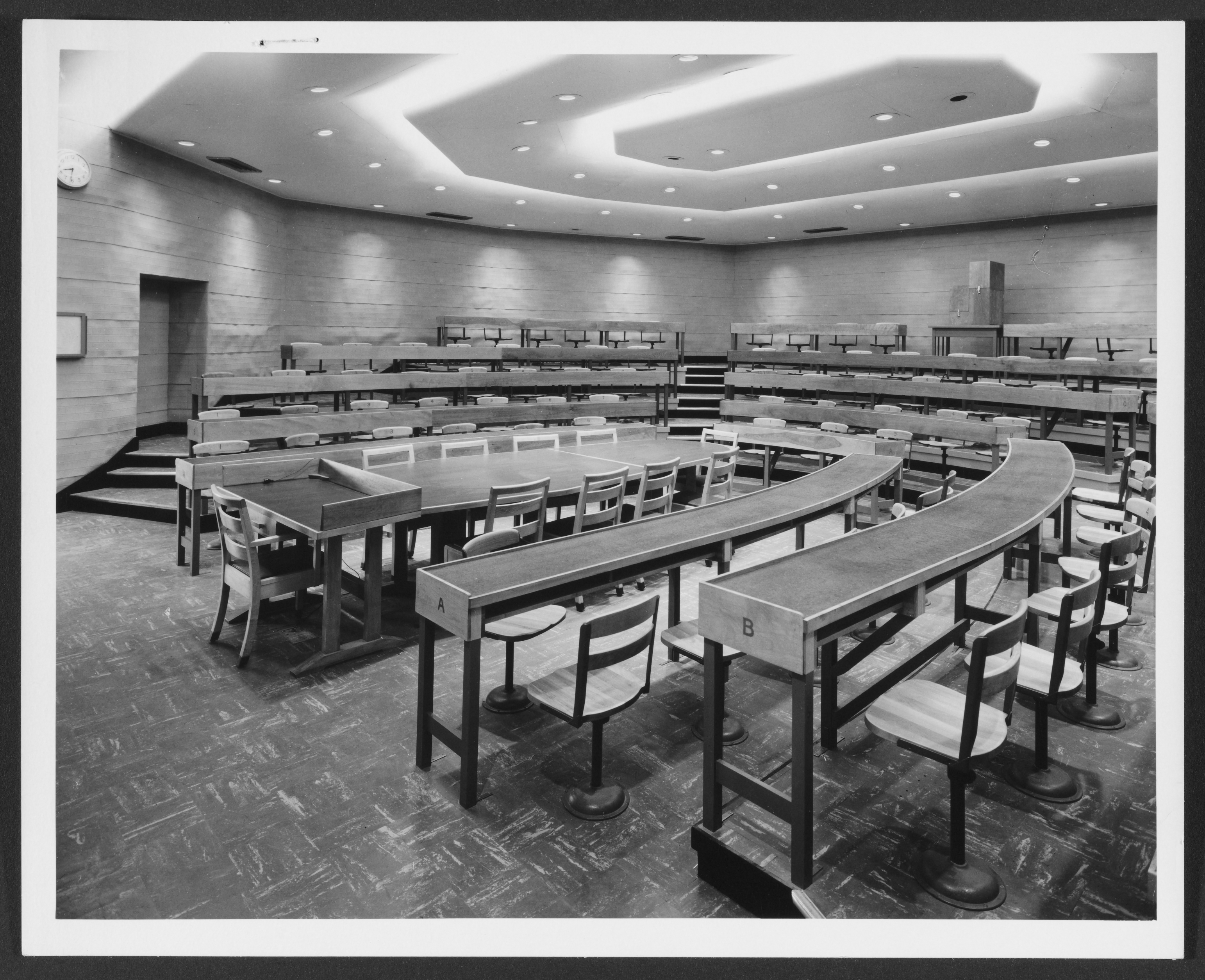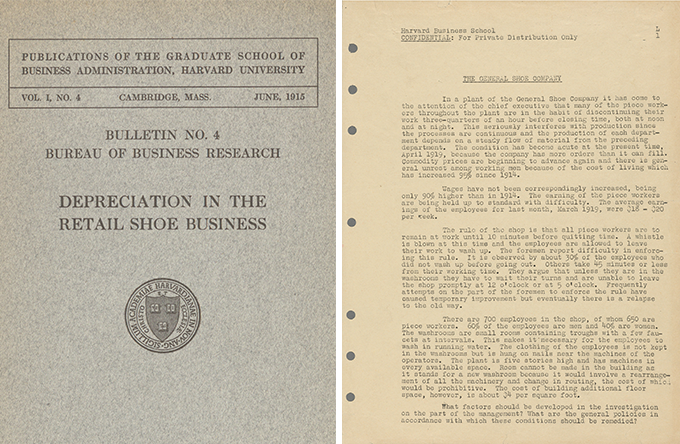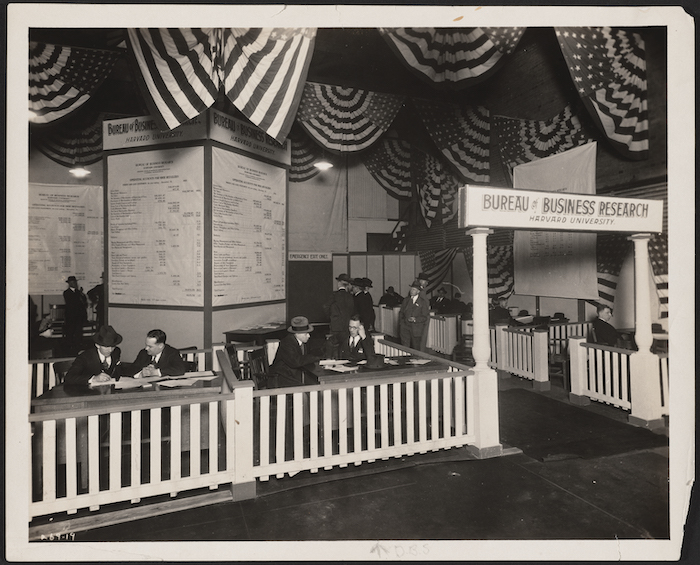Harvard Business School Announces New Exhibit Celebrating 100th Anniversary of the Case Method
|
BOSTON, March 29, 2022 —Harvard Business School’s (HBS) Baker Library Special Collections announced today the opening of a new exhibit, From Inquiry to Action: Harvard Business School & the Case Method, an exhibition marking the 100th anniversary of the teaching practice. The exhibit runs through November 2022, in the North Lobby of Baker Library | Bloomberg Center on the HBS campus. Since the 1920s, HBS has been an innovator in the development and refinement of teaching with the case method, helping to shape business education programs and business leaders around the world. Based on participant-centered learning, the instructional approach of the case method facilitates discussions about real-life problems encountered in business, preparing students for roles as leaders, managers, and decision makers. It also encourages students to plan a course of inquiry—to analyze, listen, compare other perspectives—and choose a course of action.  Before 1953, the typical HBS classroom was configured as a lecture hall with the instructor standing in front of students who were seated in rows arranged in straight lines. With classrooms designed specifically for case method teaching, Aldrich Hall represented the School’s continued commitment to this pedagogy.Mock-up classroom for Aldrich Hall, 1951. HBS Archives Photograph Collection, Baker Library, Harvard Business School
“While cases may look different in the future, the fundamental approach of discussion, debate, and deliberation will undoubtedly endure into the foreseeable future,” noted HBS Dean Srikant Datar. “The case method enables students to learn to interpret and analyze information, consider alternatives, decide on a plan of action, and persuade others about their point of view. Students learn how to learn.” Drawing from materials in the extensive HBS Archives, From Inquiry to Action examines the development of the case method during the foundational decades of HBS and the School’s early contributions that have led to the enduring influence of this participant-centered teaching practice. The exhibit looks at the case method’s early days, its rapid expansion, teaching the case method in the classroom, and its global impact on research and curriculum. Laura Linard, senior director of Baker Library Special Collections, says, “We hope this exhibition and accompanying website offer insights into the historical antecedents of this cornerstone of teaching and learning at HBS that has had such a profound impact on countless individuals and the global business community.” 
Left: Harvard University. Bureau of Business Research. Depreciation in the Retail Shoe Business. Cambridge, Mass.: Harvard University Press, 1915. Baker Library, Harvard Business School
Right: The actual “General Shoe Company” case, written by Clinton P. Biddle (MBA 1920). Clinton P. Biddle, “The General Shoe Company,” 1921. HBS Archives, Baker Library, Harvard Business School The exhibit also closely examines the very first case study taught at HBS, “The General Shoe Company,” written in 1921 by Clinton P. Biddle (MBA 1920), an early researcher at the School who later became associate dean, director of the division of research, and a professor of investment banking. The case presents a labor problem in a hypothetical shoe manufacturing plant: Workers were routinely leaving the plant 45 minutes early, adversely affecting production while the plant was struggling to fill its orders. The one-page case served as a prompt, encouraging students to analyze and discuss the situation with the information available to them, determine what questions still needed asking, and decide on a possible course of action. “What I love about the ‘General Shoe’ case is it allows students to practice a core skill of general managers: How do you go into an ambiguous situation and get to the bottom of it?” said Jan Rivkin, C. Roland Christensen Professor of Business Administration and senior associate dean and chair of the MBA Program. “That skill is as relevant today as it was in 1921.” 
The Bureau of Business Research (now the Division of Research and Faculty Development) was created to research and write case studies for use in the School’s curriculum. Here, the bureau had set up a booth at the Chicago Shoe Convention in 1923. HBS Archives Photograph Collection, Baker Library, Harvard Business School
The new exhibit is part of the School’s larger centennial celebration, highlighted on the website, Celebrating 100 years of Case Method Teaching & Learning, which includes an illustrated timeline and videos featuring HBS faculty commenting on their favorite aspect of the pedagogy. You can also hear directly from the case writers themselves in “An Ode to the Case Method and the Beauty of Engineering Disagreement.” For further information, please contact Baker Library Special Collections at 617-495-6411 or specialcollectionsref@hbs.edu. |
Mark Cautela
mcautela+hbs.edu
617-495-5143
Laura Linard
Senior Director, Baker Library Special Collections
llinard+hbs.edu
617-495-6360
About Harvard Business School
Harvard Business School, located on a 40-acre campus in Boston, was founded in 1908 as part of Harvard University. It is among the world's most trusted sources of management education and thought leadership. For more than a century, the School's faculty has combined a passion for teaching with rigorous research conducted alongside practitioners at world-leading organizations to educate leaders who make a difference in the world. Through a dynamic ecosystem of research, learning, and entrepreneurship that includes MBA, Doctoral, Executive Education, and Online programs, as well as numerous initiatives, centers, institutes, and labs, Harvard Business School fosters bold new ideas and collaborative learning networks that shape the future of business.
